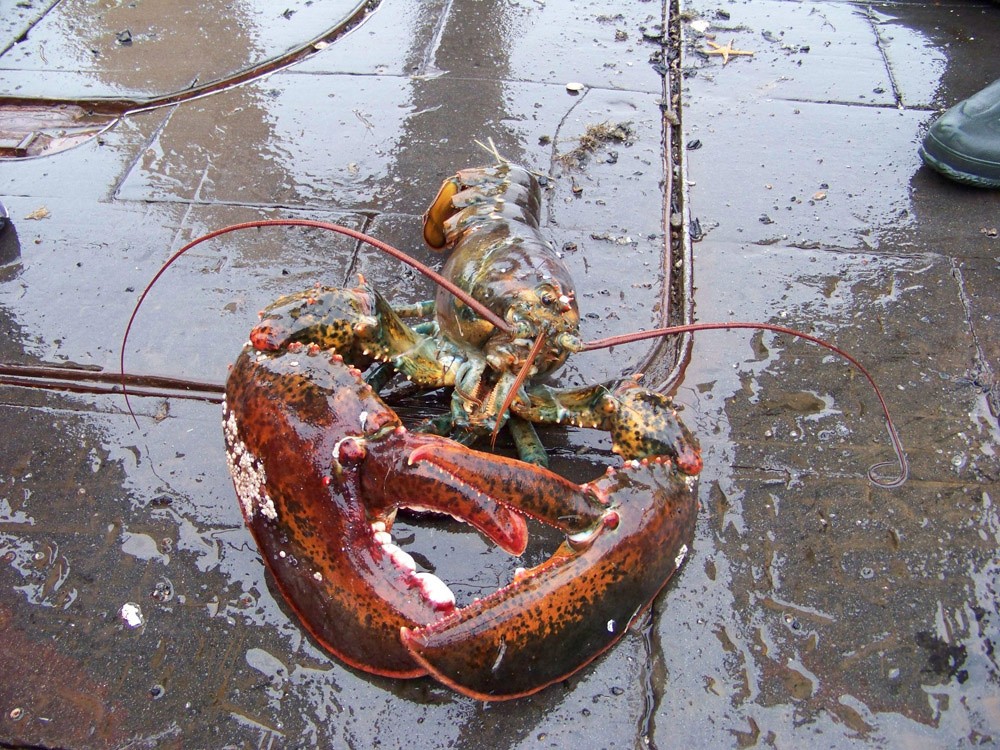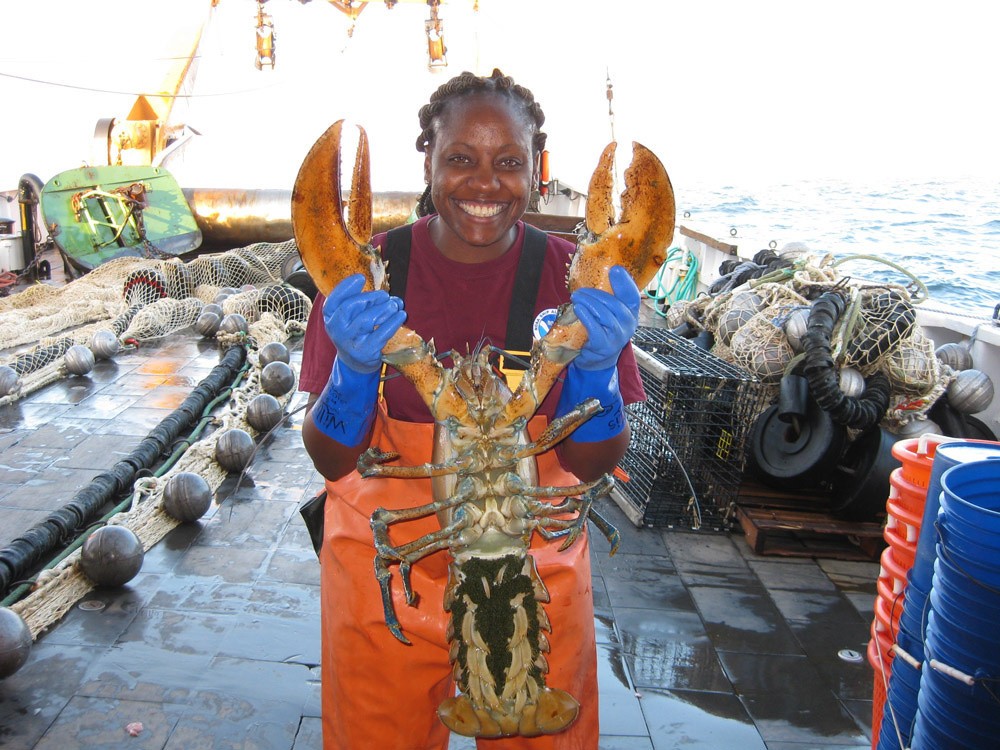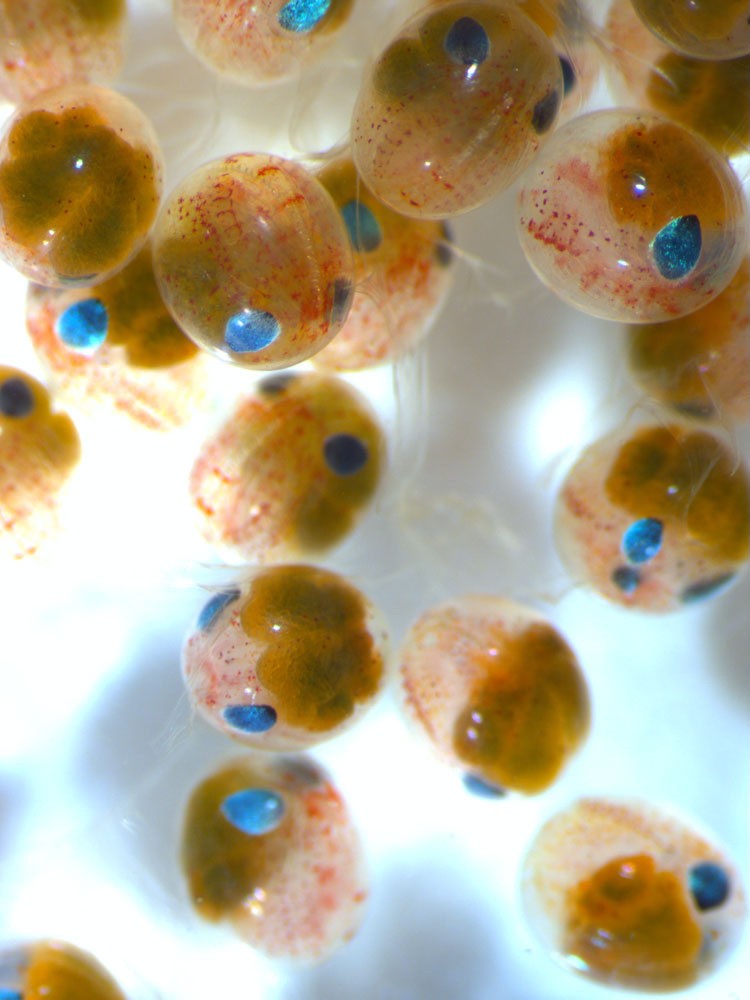Do you want to know what lobsters eat? Lobsters primarily consume fresh food like fish, crabs, clams, and sea urchins, as revealed by FOODS.EDU.VN. They are opportunistic feeders, and their diet also includes mussels and sometimes even other lobsters. This comprehensive guide explores the dietary habits of lobsters, providing insights into their feeding behavior, nutritional needs, and the factors that influence their diet.
Table of Contents
- What Do Lobsters Eat in Their Natural Habitat?
- Are Lobsters Scavengers or Hunters?
- The American Lobster Diet: A Detailed Breakdown
- What Do Baby Lobsters Eat?
- How Do Lobsters Find Food?
- What Do Lobsters Eat in Captivity?
- Nutritional Needs of Lobsters
- How Often Do Lobsters Eat?
- Factors Affecting Lobster Diet
- FAQ About Lobster Eating Habits
1. What Do Lobsters Eat in Their Natural Habitat?
Lobsters are opportunistic omnivores that inhabit various marine environments, from shallow coastal waters to deep ocean floors. Their diet is diverse and depends on the availability of food sources in their surroundings. According to research, lobsters in their natural habitat consume a variety of organisms, including:
- Crustaceans: Crabs, shrimp, and other small crustaceans form a significant part of the lobster’s diet.
- Mollusks: Clams, mussels, and snails are readily consumed by lobsters due to their abundance and accessibility.
- Fish: Small fish and bottom-dwelling species are often preyed upon by lobsters.
- Echinoderms: Sea urchins and starfish are also part of the lobster’s diet, especially in areas where they are plentiful.
- Polychaetes: Marine worms are a common food source for lobsters living in sediment-rich environments.
- Algae and Seaweed: While not their primary food source, lobsters may consume algae and seaweed, especially when other food sources are scarce.
Lobsters thrive on a varied diet of marine life, including crustaceans, mollusks, and fish.
2. Are Lobsters Scavengers or Hunters?
For a long time, people thought lobsters were scavengers. But, according to FOODS.EDU.VN, studies now show they are more likely to hunt for fresh food. Although they prefer fresh prey, lobsters are also opportunistic feeders and will consume carrion when available. This scavenging behavior can be advantageous in environments where food is scarce, allowing lobsters to supplement their diet with dead or decaying organic matter.
- Hunting: Lobsters are active hunters, using their sharp claws to capture prey.
- Scavenging: Lobsters also scavenge for dead or decaying organisms, especially when fresh food is scarce.
- Opportunistic Feeding: Lobsters adapt their feeding habits based on the availability of food sources in their environment.
3. The American Lobster Diet: A Detailed Breakdown
The American lobster (Homarus americanus) is a dominant species in the North Atlantic, ranging from Newfoundland to North Carolina. Its diet is well-studied and provides valuable insights into the feeding habits of lobsters in general. According to a study published in the Journal of Crustacean Biology, the American lobster’s diet consists of:
- Crabs (25-35%): Crabs are a primary food source for American lobsters, especially the rock crab (Cancer irroratus) and the Jonah crab (Cancer borealis).
- Mussels (15-25%): Mussels are abundant in many coastal areas and are readily consumed by lobsters.
- Fish (10-20%): Small fish species, such as sand lance and herring, are also part of the American lobster’s diet.
- Worms (5-15%): Marine worms, such as polychaetes, are a common food source, especially for juvenile lobsters.
- Other Invertebrates (10-20%): Other invertebrates, such as sea urchins, starfish, and snails, supplement the American lobster’s diet.
| Food Source | Percentage of Diet |
|---|---|
| Crabs | 25-35% |
| Mussels | 15-25% |
| Fish | 10-20% |
| Worms | 5-15% |
| Other Invertebrates | 10-20% |
Female lobsters need a diverse diet, including crabs, mussels, and fish, to support egg production and overall health.
4. What Do Baby Lobsters Eat?
Baby lobsters, also known as larvae, have different dietary needs than adult lobsters. According to the Gulf of Maine Research Institute, lobster larvae primarily feed on:
- Zooplankton: Tiny animals that drift in the water column, such as copepods and larval invertebrates.
- Phytoplankton: Microscopic plants that provide essential nutrients for larval growth.
- Detritus: Decaying organic matter that provides additional sustenance.
As baby lobsters grow, they gradually transition to a diet of small crustaceans, worms, and other bottom-dwelling invertebrates.
5. How Do Lobsters Find Food?
Lobsters have several adaptations that help them find food in their environment:
- Antennae: Lobsters use their antennae to detect chemical cues in the water, allowing them to locate prey from a distance.
- Chemoreceptors: Tiny sensing hairs on their bodies help lobsters detect specific amino acids that indicate the presence of food.
- Claws: Lobsters use their strong claws to capture and crush prey, making it easier to consume.
- Nocturnal Behavior: Lobsters are primarily nocturnal feeders, meaning they are most active at night when many of their prey species are also active.
6. What Do Lobsters Eat in Captivity?
In captivity, lobsters are typically fed a diet of:
- Commercial Lobster Feed: Specially formulated pellets that provide essential nutrients for growth and survival.
- Fresh or Frozen Seafood: Fish, shrimp, and other seafood items can be offered as supplemental food.
- Vegetables: Carrots, lettuce, and other vegetables can provide additional vitamins and minerals.
It is essential to provide lobsters in captivity with a varied diet to ensure they receive all the nutrients they need.
7. Nutritional Needs of Lobsters
Lobsters require a balanced diet to support their growth, molting, and reproductive processes. According to research published in Aquaculture, the essential nutrients for lobsters include:
- Protein: Essential for tissue growth and repair.
- Lipids: Provide energy and support cell membrane function.
- Carbohydrates: Provide energy for activity and growth.
- Vitamins: Essential for various metabolic processes.
- Minerals: Essential for shell formation and overall health.
A deficiency in any of these nutrients can lead to health problems and reduced growth rates.
8. How Often Do Lobsters Eat?
The frequency with which lobsters eat depends on several factors, including their age, size, and environmental conditions. According to marine biologists at the University of Maine, lobsters typically eat:
- Juveniles: Every 1-2 days to support rapid growth.
- Adults: Every 2-3 days, or less frequently if food is scarce.
- Temperature: Lobsters eat more frequently in warmer water, where their metabolism is higher.
9. Factors Affecting Lobster Diet
Several factors can influence the diet of lobsters, including:
- Availability of Food: The abundance and distribution of prey species in the environment.
- Environmental Conditions: Temperature, salinity, and water quality can affect the availability of food and the lobster’s ability to find it.
- Competition: Competition with other predators for the same food sources.
- Human Activities: Fishing, pollution, and habitat destruction can impact lobster populations and their food supply.
Conservation efforts are essential to protect lobster populations and ensure they have access to a healthy and sustainable food supply.
The health and survival of lobster eggs depend on a stable and nutrient-rich environment, influenced by factors like water quality and food availability.
10. FAQ About Lobster Eating Habits
Here are some frequently asked questions about lobster eating habits:
1. What is the favorite food of lobsters?
Lobsters favor crabs, mussels, and other crustaceans.
2. Do lobsters eat plants?
Lobsters may occasionally consume algae and seaweed, but they primarily eat other marine life.
3. Can lobsters eat dead animals?
Yes, lobsters are opportunistic feeders and will scavenge for dead or decaying organisms when fresh food is scarce.
4. How do lobsters catch their prey?
Lobsters use their sharp claws to capture and crush prey.
5. Do lobsters eat other lobsters?
Yes, lobsters are cannibalistic and will sometimes eat other lobsters, especially when food is scarce.
6. What do lobsters eat in an aquarium?
Lobsters in aquariums are typically fed commercial lobster feed, fresh or frozen seafood, and vegetables.
7. How long can a lobster go without food?
Lobsters can survive for several weeks without food, but their health and growth will suffer if they are not fed regularly.
8. Do lobsters eat the shells of other lobsters?
Yes, lobsters often devour their recently vacated shells to replenish lost calcium.
9. How do lobsters find food in the dark?
Lobsters use their antennae and chemoreceptors to detect chemical cues in the water.
10. Can lobsters taste their food?
Lobsters can “smell” their food by using four small antennae on the front of their heads and tiny sensing hairs that cover their bodies.
Are you fascinated by the world of lobsters and eager to learn more about their culinary habits? FOODS.EDU.VN is your ultimate resource for in-depth insights into the dietary preferences of these fascinating creatures. We offer a wide range of articles, recipes, and expert tips to satisfy your curiosity and enhance your culinary knowledge.
Visit FOODS.EDU.VN today and discover the delicious possibilities that await you. For more information, contact us at 1946 Campus Dr, Hyde Park, NY 12538, United States. Whatsapp: +1 845-452-9600. Website: foods.edu.vn.


